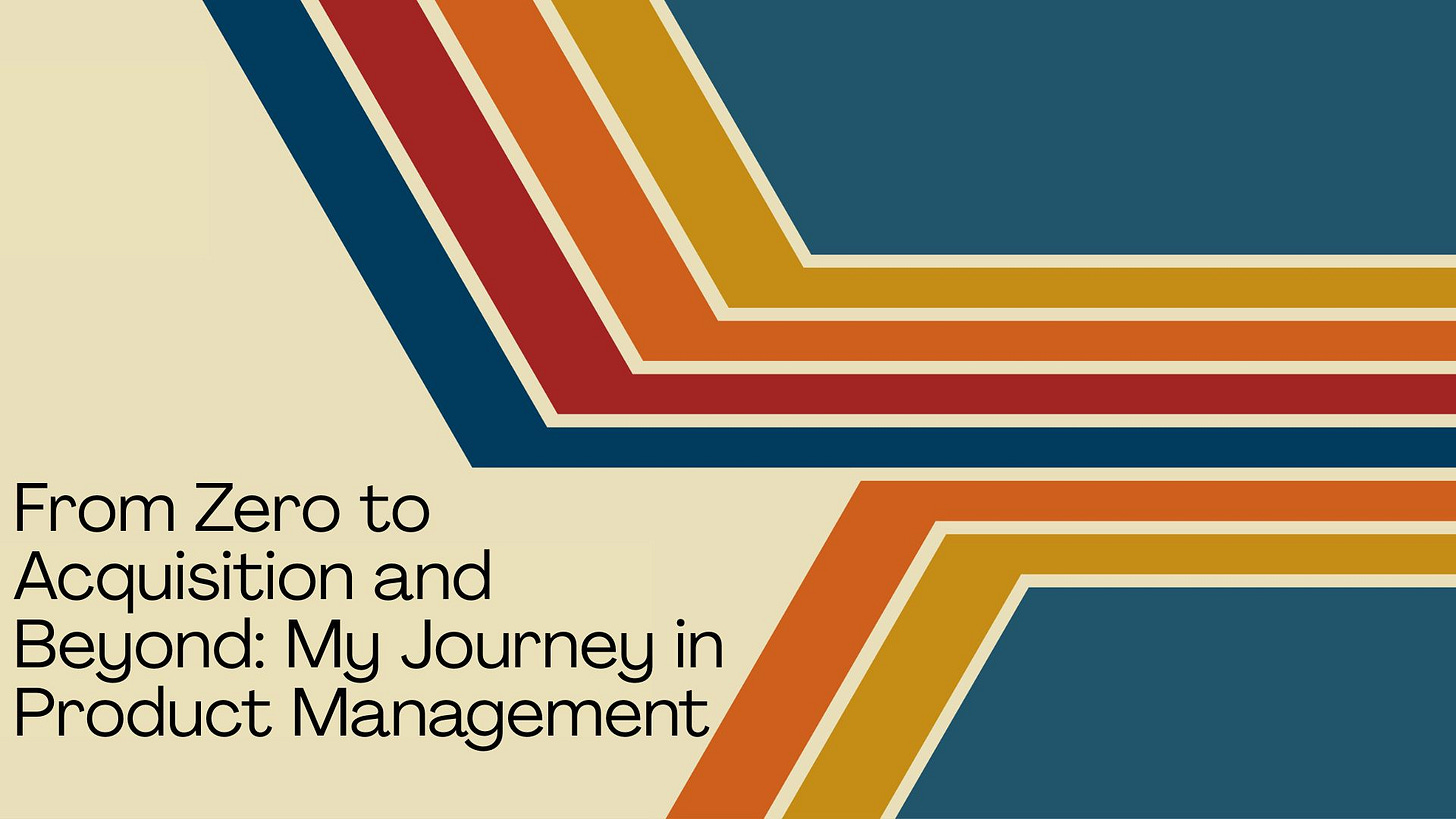From Zero to Acquisition and Beyond: My Journey in Product Management
I didn’t start with a roadmap. I wasn’t a product expert with years of experience. I was a 22-year-old college grad with an entrepreneurial mindset and a strong desire to solve problems. That mindset took me from an entry-level job at a startup, which was later sold for $110M. Then, I led product at a late-stage unicorn, driving growth with data. Now, I’m the Chief Product Officer at OnBoard, where I simplify governance software and use AI to build valuable features for boards and directors.
Every step in my journey has influenced how I build products. I have moved from startup chaos to enterprise discipline, then to late-stage scale. Here’s what I’ve learned along the way.
1. The First Break: One Email Changed Everything
At 22, I didn’t know what product management was. My only tech experience was building websites for small businesses. But I knew I wanted to be part of something new—something fast-moving and entrepreneurial.
I cold-emailed people in the industry, trying to break in. One email resulted in a lunch meeting, introducing me to an investor. Then, I received an offer to join Jobs2Web as the fourth employee.
That was my first lesson: opportunities don’t happen; you must create them.
2. Startup Hustle: Learning Product by Doing Everything
When I joined Jobs2Web, we didn’t have product-market fit yet. We were a job search engine, not a real platform. I had no set role, so I did it all. I worked on marketing, analytics, product, and customer support. I even built our first website.
We found our niche: helping companies like Best Buy and Microsoft attract and hire talent online. Once we hit product-market fit, growth exploded.
One of our co-founders once said: “This young guy figures things out and moves things forward.” That stuck with me. In the early stages of a company, your job is not about titles—it’s about solving problems and executing.
3. The $110M Acquisition and a Crash Course in Enterprise Software
By 2011, we had over 100 enterprise customers, and SuccessFactors acquired us for $110M. Weeks later, SAP bought SuccessFactors for $3.4B. In a few weeks, I was at one of the biggest software companies in the world.
At SAP, I learned the fundamentals of enterprise product management.
• Roadmaps matter. You can’t build features without careful planning; you need structured, multi-year plans.
• Enterprise customers demand scale. Every feature must integrate without any disruption to legacy systems.
• Execution beats vision. A great idea is worthless if you can’t operationalize it at scale.
One of my biggest mistakes at SAP? Not prioritizing integrations early enough. That mistake haunted us for years, reinforcing a core lesson: Do things right the first time. If something is foundational, don’t cut corners.
4. The Unicorn Stage: Leveraging Data to Drive Product Decisions
After SAP, I joined a late-stage unicorn, where I saw firsthand how data and metrics drive product at scale. This marked a change from my startup days. In those times, we often made decisions based on instinct vs. real data.
At scale, data became the most powerful tool for growth.
Product Usage Metrics: We tracked user data in real-time. This helped us see which features were important. We used this info to improve adoption and optimize our product.
Customer Segmentation: We identified key users and improved features to increase engagement and encourage repeat visits.
AI and Predictive Analytics: We built intelligent product experiences, predicting user behavior and automating workflows.
This approach transformed how we built products. Instead of rolling out random features, we built based on what the data told us would move the needle.
5. Leading OnBoard: Simplicity, AI, and the Future of Governance Software
Now, as Chief Product Officer at OnBoard, I’m applying all these lessons to a private equity-backed company serving thousands of boards and directors worldwide.
6. Key Lessons for Founders and Product Leaders
Looking back, my journey wasn’t all about luck—it was about taking action, learning quickly, and driving execution. Here are the lessons that stand out:
1. Take Initiative—Opportunities Don’t Just Show Up
That first cold email changed my career. One introduction can open doors you never expected.
2. In Startups, Titles Don’t Matter—Execution Does
In early-stage companies, your job is to move things forward—whatever that takes.
3. Prioritize the Right Foundation—Don’t Cut Corners
Technical debt and poor integrations will slow you down later. Get it right from the start.
4. Leverage Data—Don’t Just Guess
Your gut is great for early-stage decisions, but at scale, data must drive product choices.
5. Looking Ahead: Building for the Next Era
My journey started with a cold email and led to creating products for global companies. This has strengthened one key belief:
Step up and try; then move things forward.
No matter if you’re new to product management, growing a company, or leading a big product team, the main point is clear: Take action. Learn fast. Solve real problems. And keep pushing forward.



